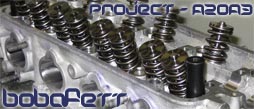(1) Don't worry if you're not smooth at first, it'll eventually come naturally with experience. When you're easing out the clutch, don't be afraid to give more pressure on the gas pedal. You may bring the rpm's up and rev a little going into the shift, but it's better than not giving enough gas, then stalling out and lurching to a stop. As you get more practice and get used to the clutch pressure and the catch point, your shifting will eventually become much smoother.
(2) Don't worry about downshifting until you get used to upshifting. Again, once you get used to it, car speed/gear selection will become automatic and you'll be able to downshift smoothly without using the gas pedal.
(3) Don't force 1st or reverse. If you initially feel any resistance going into 1st gear, let the shifter back into neutral, let the clutch out then press it back in, then try 1st again. When shifting into reverse I always go into 1st gear first. Bring the car to a full stop (obviously), and with the clutch in, shift into 1st gear, then bring it into reverse. If you still feel any resistance going into reverse, do that again. Doing that helps line up the sychros.
(4) Like A20A1 said, practice a lot on open level parking lots or roads. You really should get comfortable with the clutch engagement point before you find yourself stuck at a stop sign or red light facing uphill and you've got to shift into 1st from a dead stop with another car right on you ass.
Oh, and I wouldn't really try starting out in 2nd. The only reason is because you do have to rev it a little bit to keep from stalling. It's a little different techinique than starting in 1st. Plus, in stock form, I don't think you have to worry too much about chirping the tires with these motors. They will get you to 200,000+ miles, but not all that fast.




 Reply With Quote
Reply With Quote




 *
*





Bookmarks